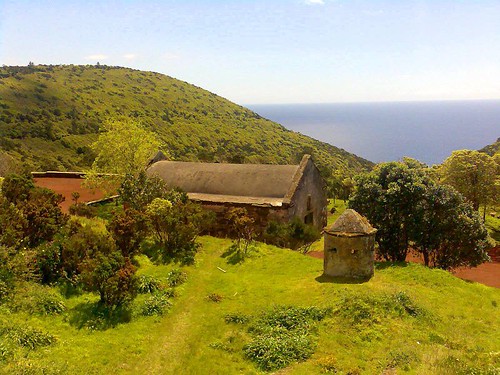
Monte brasil Azores Terceira
The Azores or Açores are an archipelago of nine islands in the middle of the Atlantic Ocean. The entire archipelago is considered an autonomous region of Portugal and is divided into three groups of islands: the eastern group comprised of São Miguel and Santa Maria, the central group comprised of Terceira, Graciosa, São Jorge, Faial, and Pico, and the western group comprised of Corvo and Flores. While the Azores is part of Europe, its westernmost island Flores lies on the North American plate, so the islands are actually at the edge of Europe. Today, tourism is a big part of the Azores. The multitude flock to these remote islands each year, mostly to relax in the peaceful and quiet backdrop of the beautiful Atlantic.
The history of the Azores is not an extensive one. The island was uninhabited prior to the 15th century. It was first sighted off the mainland of Portugal by Atlas Catalan in the 14th century and was rediscovered by Henry the Navigator in 1427. The islands were subsequently colonized by the Portuguese. During WWII, the islands played a substantial role in the outcome of the war; the Portuguese initially allowed only German u-boats to use the islands for refueling but later leased the islands to the British halfway through the war.
While tourism in the Azores is modest, many from Europe come to these islands regularly. The population of the entire Azores is only about 250,000 people, so life is slow-paced, peaceful, and quiet. The climate in the Azores is much like Portugal, maritime-warm year-round. And the natural beauty of the islands is obvious to all; the Azores is a treasure of volcanic cones and craters, geysers and sulphur springs, lush green vegetations, rugged coastlines, rocky bays and inlets, azure blue and green lagoons, sandy beaches, banana groves and pineapple trees, country side villages, vineyards and fruit trees atop sloping hills, and wild flower fields of Azaleas and Hydrangeas.
There is much to do on these islands. Besides swimming and sunbathing in the rocky pools, inlet bays and beaches, and warm lagoons, water sports like sailing, yachting, windsurfing, scuba diving, and whale watching are also popular. Golfing can also be done on São Miguel and Terceira.
The Azores is also known for its big game fishing as well, being the home of sharks, swordfishes, tuna, and oceanic bonitos. Fresh water fishing can also be done São Miguel and Flores. The interior and countryside with its naturally beautiful landscapes – hills, dales, flower fields, and seascape cliffs – are great for cycling and hiking as well. Unique to the Azores are the volcanic craters, undergrounds lakes, and sulphur grottoes and caverns that can be explored – the islands of São Miguel, Santa Maria, São Jorge, Pico, and Terceira being the best for the aforementioned.
Religious festivals also inject a vibrant energy into the islands. Various festivals like the Festival of the Lord Christ, St. John’s Festival, the Praia da Vitoria, and the Faial Sea Festivals involve folk dancing, animated bullfights, and lively water sports activities.


Comments